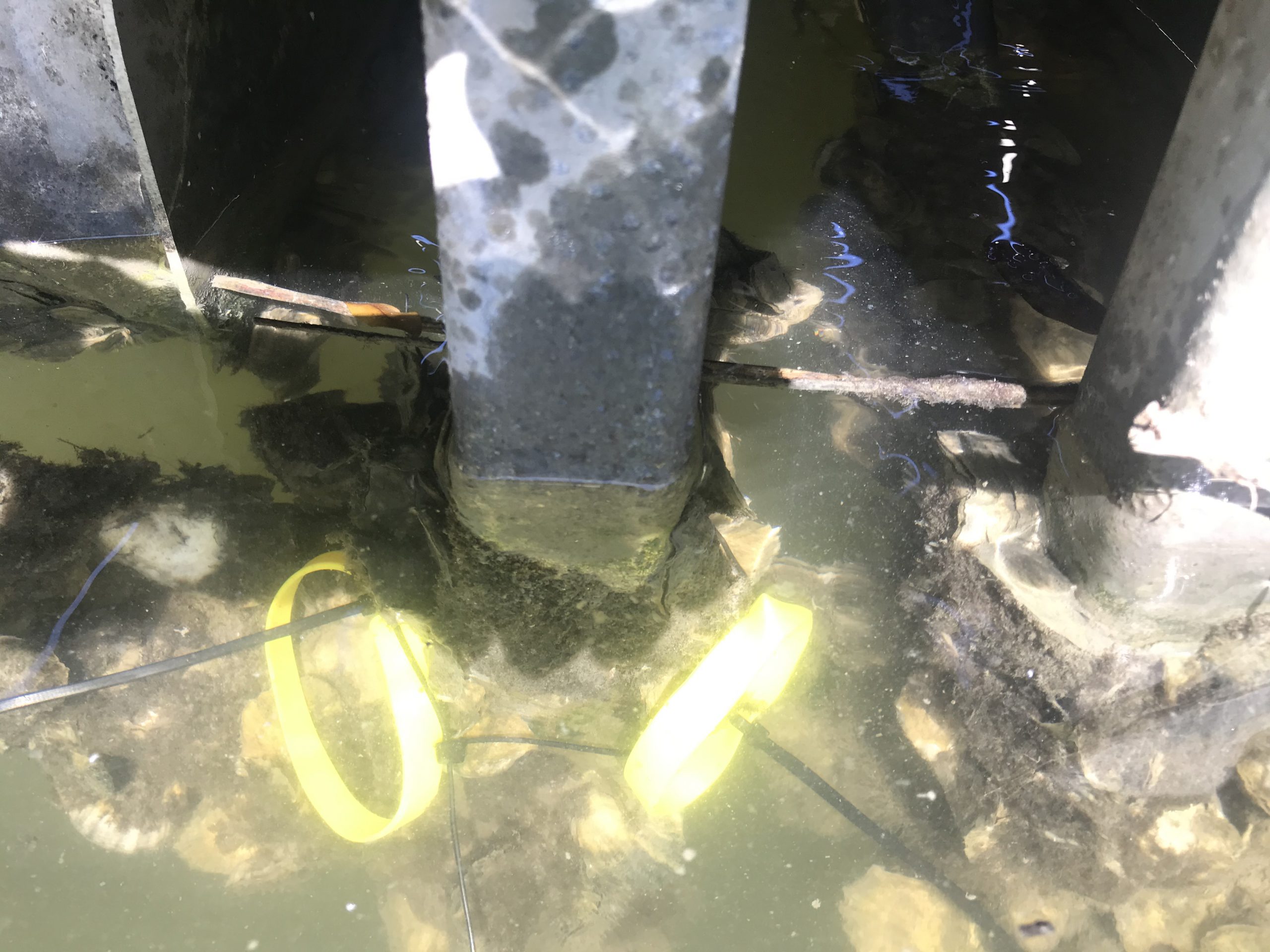We have teamed with Charleston Waterkeepers to evaluate how effective passive sampler technology (silicone bands) is at detecting organic contaminants in local waterways. Silicone band samplers are inexpensive and easy to use, allowing citizen scientists to conduct local environmental monitoring. Such monitoring could help identify sources of pollution entering South Carolina’s coastal waters, as well as provide a better understanding of how passive samplers perform in estuarine environments.
Why We Care
For decades, persistent organic pollutants have been detected and identified in coastal waterways throughout the United States. Known for their slow decomposition and adverse effects, these contaminants pose serious health risks to wildlife and people alike. Current use pesticides are also of concern, as they are used year-round in residential, agricultural, and commercial applications. Runoff from farms, residential properties, and local golf courses during rain and flooding events can carry these pollutants into waterways, threatening coastal ecosystem health.
With proper environmental samplers, we can identify and measure these chemical contaminants. Then, we can assess relationships between these contaminants and land-use and population metrics. The resulting data could benefit environmental agencies charged with managing chemical inputs to the coastal ecosystem.

Silicone band deployment at one of 15 field sites used in the pilot study. Credit: Charleston Waterkeepers.
What We Are Doing
Because these passive samplers are relatively new technology compared to other environmental samplers, we have developed new techniques for their deployment in the field and new analytical methods to identify and quantify contaminants adsorbed to them.
In collaboration with Charleston Waterkeepers, we developed a seasonal model where silicone bands will be deployed at 15 sites in and around Charleston Harbor. The sites are locations where bacterial water quality is already being measured and reported by the Charleston Waterkeepers team. With the aid of volunteer field crews, passive samplers will be deployed for 28 days at each of these sites in the fall, winter, spring, and summer to monitor seasonal trends of contaminants year round. After 28 days, field crews will collect the samplers and deliver them to the NCCOS Hollings Marine Laboratory in Charleston, South Carolina, where contaminants will be extracted and analyzed using Gas Chromatograph Mass Spectrometry instrumentation.
Benefits of Our Work
The data from this study will be used to make seasonal assessments of organic contaminant loads from coastal waterways. Also, by working with volunteer organizations like Charleston Waterkeepers to gain a better understanding of this passive sampler technology, we are raising public awareness about chemical contaminants and helping promote stewardship of the coastal environment.
 Official websites use .gov
A .gov website belongs to an official government organization in the United States.
Official websites use .gov
A .gov website belongs to an official government organization in the United States. Secure .gov websites use HTTPS
A lock or https:// means you’ve safely connected to the .gov website. Share sensitive information only on official, secure websites.
Secure .gov websites use HTTPS
A lock or https:// means you’ve safely connected to the .gov website. Share sensitive information only on official, secure websites.